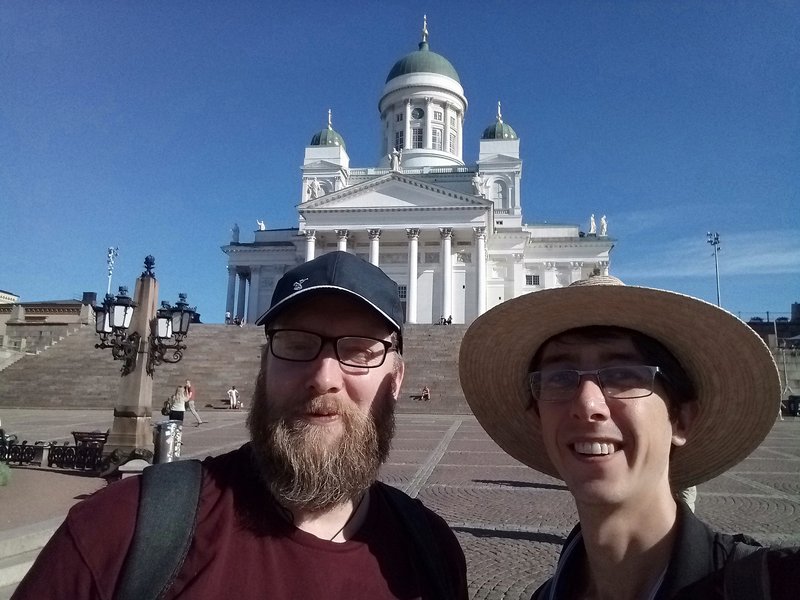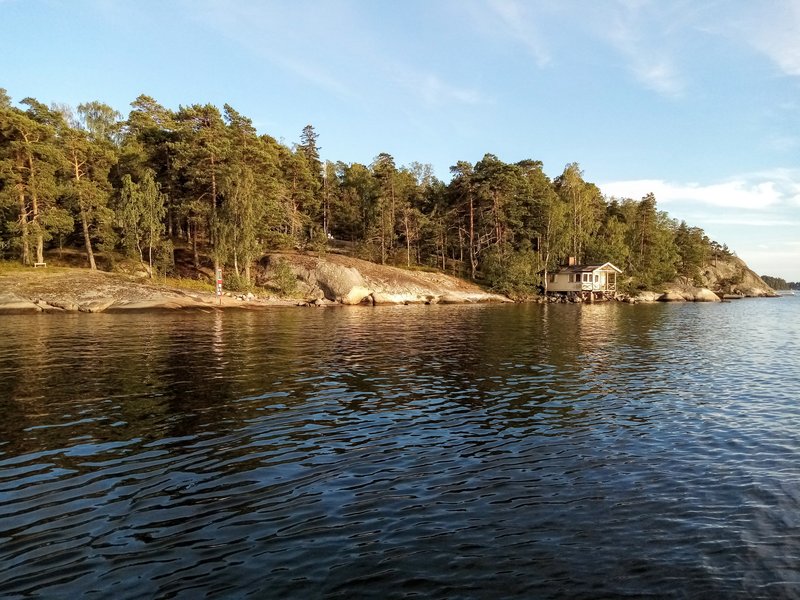Alex Buckley, Catalyst Koha Developer, is back to bring you the latest updates from day two KohaCon 2023 held in Helsinki. Missed the highlights from day one? Check them out here.
KohaCon 2023: Day Two Highlights
1. The Daily (Coffee) Grind
Attending KohaCon yesterday, with my colleague Chris Cormack was fantastic. I woke up ready for day two feeling inspired and started with a morning networking session. Over coffee, I met some of the other great Koha community members I have worked with remotely for years. I also managed to meet others from the Perl community and even some Koha end-users. Meeting such a broad range of people with an interest in Koha is one of my favourite things about KohaCon.
From there, we moved into some of the sessions for day two. Here were my highlights for the day...
2. Katrin Fischer - How To Kill A Bug
Katrin continued her mission inspiring new people to contribute to Koha. Yesterday she detailed the various ways non-technical people could contribute to Koha. Today she provided an example of how someone would actually resolve a problem (bug) in Koha by writing a code fix.
Katrin demonstrated that code fixes don’t require coding knowledge. In fact, for this example, she wrote a fix for a typo in the database files that Koha uses for generating Koha notices. Essentially changing the incorrect wording ‘thankyou’ to ‘thank you’. Simple enough that anyone non-technical could make the change.
She explained to get her fix added to the Koha codebase she would need to:
- Create a bug report in BugZilla.
- Attach the new code fix to it.
- Change the status of the bug report to ‘Needs sign off’.
Next, two other people from the Koha community (they cannot be from within your organisation) must test your fix. This is to ensure it meets the Koha coding guidelines prior to sign off. Once this is completed, it can be merged into the Koha codebase by the community appointed release maintainer.
This process of getting your code fix added to the Koha codebase is called upstreaming.
Katrin also reminded the community that a helpful title and bug description should be included in the bug report. And, in my experience as a Koha Developer, these definitely maximise your chance for getting your code change upstreamed.
It was really nice seeing a number of librarians and Perl (but not yet Koha) developers attend Katrin’s talk. Hopefully there will be some inspired newbies ready to make their first Koha contribution soon.
3. Tarja Mäkinen - Holdings – why items are not enough
I always find it fascinating to hear the different ways libraries use Koha. Particularly given I come to Koha from a technical, versus a library background. And this talk by Tarja who works at the National Library of Finland definitely delivered on that.
Firstly, Tarja explained how the National Library of Finland chose storage for holdings records during their Voyager to Koha migration.
Typically in Koha there are two types of catalogue record:
- Bibliographic records which store key information about a title. For example, the name, author, publication date, ISBN, ISSN, and so on.
- Item records which store information about each copy of the bibliographic record the library catalogue holds. Often these are data values including:
- The usual home library of the item.
- Where is the item currently located (holding branch).
- Barcode.
- Call number.
- Replacement cost of the item.
- The usual home library of the item.
However, Tarja highlighted that Koha item records have data fields focussed around circulation details, not the comprehensive collection descriptions that holding records require. For example, there is no appropriate field in Koha item records for storing conservation information about items. This information is especially important for libraries with old and rare collections to track and manage.
Tarja explained how the National Library of Finland chose to use the 8XX MARC data fields for storing their holdings information. However, she suggested some improvements to Koha that would better support holdings records for other libraries in the future. One suggestion was implementing a better connection to the bibliographic record making it easier for libraries to define the information needed to be in the holding record.

4. Alex Buckley - Tip Top Training Tips
I was also delighted to be able to present ‘Tip Top Training Tips’ - the first of my two KohaCon talks. I covered the tips and tricks I’ve learnt coming from a developer background to training librarians on how to use Koha both at in-person and on remote training sessions.
One of the messages of my talk was that the flow of knowledge at a Koha training session is not just from the trainer to trainee. But, also visa versa. As a trainer you learn so much from your trainees about how they use their Koha instance. And also about real-life applications for new feature requests they would like added to Koha.
It was such a treat presenting the talk in person. I loved interacting with the audience through the Q&A session, the excellent questions and lovely feedback about my session at morning tea.
5. Helsinki harbour sea cruise
The day finished with a gorgeous sea cruise for 1.5 hours in Helsinki harbour. A small cruise ship carrying the conference attendees weaved it’s way through the beautiful forested, rocky islets.
We were, again, incredibly lucky with the weather having blue sky and moderate temperatures for this sunset cruise. The end to another great conference day. We’re looking forward to day three.

